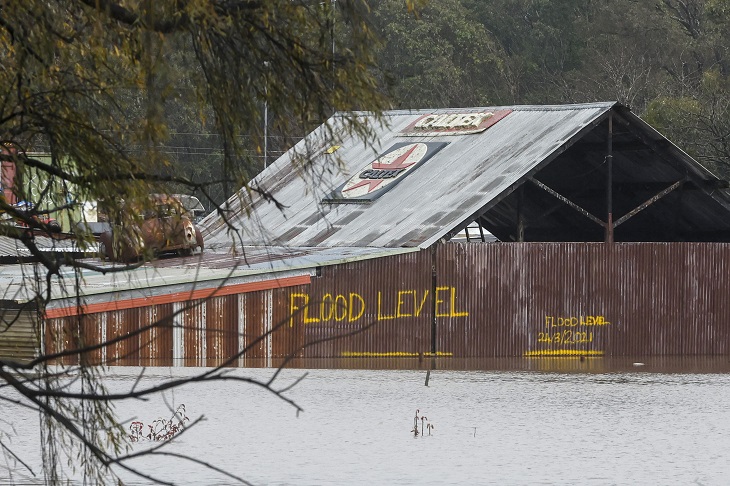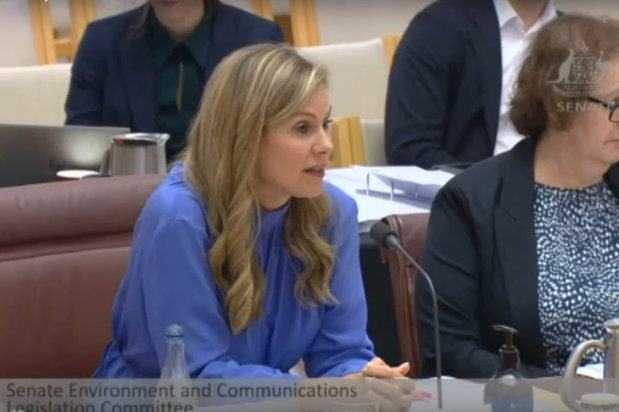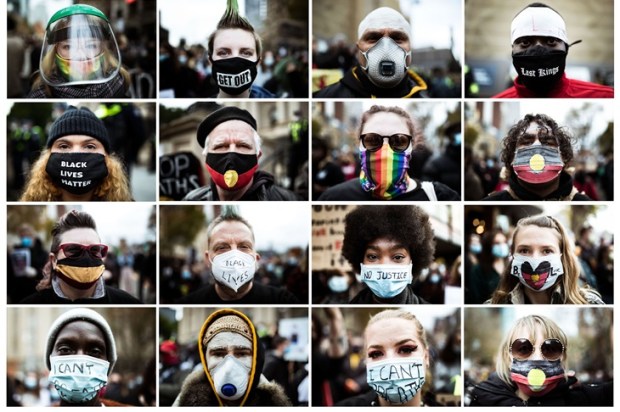Australia has, throughout its history, been a land of drought, floods, and fire. It is recognised as the driest inhabited continent in the world; inevitably, modern ideology relates all these facts to Climate Change…
The latest point of concern is a series of storms that have resulted in major flooding events along the East Coast. Keep in mind, this is the same climate ideology that prevented dam building on the insistence that it would not rain.
The effect of these natural disasters is made more pronounced, not by a changing climate, but the demands of a steadily increasing population and agricultural irrigation. In addition, the involvement of humans in flooding events and fire disasters has been increased by building homes in at-risk areas.
For much of Australia, water has historically been supplied by rainfall and bore water from the Great Artesian Basin, which is an underground aquifer that covers a massive 1.7 million square kilometres of Eastern and Northern Australia and contains an estimated 65,000 million Megalitres. The current La Niña event has brought with it the anticipated heavy rain and floods which help replenish the Basin, even though most of the water is wastefully washed out to sea.
Those who read history, a progressively diminishing number, will appreciate that there were 27 drought years between 1788 and 1860, and 10 major droughts between 1860 and 2000. The worst drought in recent history was the Federation Drought which lasted from 1895 to 1903 and, as is often the case, it was broken by floods. It resulted in a loss of 40-70 per cent of livestock and many were driven from the land.
Droughts are typically associated with the El Niño weather pattern. The strongest ever recorded, in 1982-83, was associated with one of the most severe droughts of the 20th century. The most recent major event was the Millennial Drought from 2001-09, recognised as being due to a similar El Niño event, but inevitably blamed on Climate Change.
As is so often the case, the media were inspired by climate activists to predict a worsening future catastrophe. Infamous rain ‘expert’, Professor Tim Flannery, was moved to comment that this dry patch was the new climate and that rivers would never run again.
‘We’re already seeing the initial impacts and they include a decline in the winter rainfall zone across southern Australia, which is clearly an impact of Climate Change, but also a decrease in run-off. Although we’re getting say a 20 per cent decrease in rainfall in some areas of Australia, that’s translating to a 60 per cent decrease in the run-off into the dams and rivers. That’s because the soil is warmer because of global warming and the plants are under more stress and therefore using more moisture. So even the rain that falls isn’t actually going to fill our dams and our river systems.’
Panic set in over IPCC and other climate modelling. The concept of building new dams was considered pointless and a rush to build desalination plants was considered the only option to provide water for the major coastal cities.
Over the period from 2006-12, desalination plants were completed in all coastal capital cities except in those with secure rainfall or inland location – in Tasmania, ACT, and Northern Territory. Perth and Adelaide have always had less water security, and their plants have been in regular use, those in the other capital cities have had minimal use. The total cost of constructing the 6 plants (WA had 2) was over $9 billion, with significant ongoing maintenance costs.
Allowing for its fluctuations with droughts and floods, the East Coast of Australia has had remarkably consistent annual rainfall over the last 100 years. There is no suggestion it is diminishing.
Over the whole of Australia, rainfall has been increasing by about 6mm per decade, from 400mm per year in 1900, to 500 mm per year today.
Floods are part of the country’s DNA, with an average cost of around $400 million annually, the 2010-11 floods cost the economy an estimated $30 billion. As with droughts, this is nothing new, nor are they increasing in frequency, with an average incidence of around one year in five. These events are often associated with La Niña weather patterns, as has been the case in recent months, or the tail end of the cyclones which occur twice as commonly with that weather pattern. There have been 18 La Niña events since 1900, with associated major flooding occurring in 1955, 1958, 1998, 2010/11 and currently.
Loss of life is uncommon. The worst events recorded over 200 years were the 1859 Gundagai flood in New South Wales, and the 1916 flood in Clermont, Queensland. In modern times early warning means few lives are lost, losses mainly caused by idiots driving across flooded roads.
Apart from water capture, there are two, other (sometimes ignored) reasons for dam building. Flood mitigation is the first – as was demonstrated by the Brisbane floods of 2011, alleged to have been accentuated by mismanagement of the Wivenhoe Dam; the recurring flooding in Brisbane suggests that perhaps lessons have not been learned. Secondly, they can be used for hydropower generation. This was considered acceptable for Snowy Hydro 2, (despite its non-commercial cost), but is not considered with other dams, apart from those in regularly raining Tasmania.
The Traveston Dam in Queensland had been a project to dam the upper reaches of the Mary River and connect it to other dams to supply Brisbane for increased water security. The land had been bought, and new roads built around the area; environmental arguments resulted in a delay of four years and ultimate cancellation by the federal Labor government in 2009. The projected cost of the build had been $1.7 billion, eventually, nothing was done – at a cost of $460 million.
Despite these setbacks, smaller private dams are still being constructed; the NSW government had plans to build two more (the first since 1987) for Sydney, and raise the height of the existing Wyangala Dam. Because of recent good rain, the usual environmental impact studies, and doubts about financial viability, the dam extension and the smaller Mole River Dam will not now go ahead. Another project, the Dungowan Dam is still likely to proceed, but water security will remain an issue as the Sydney population increases. Even an attempt at increasing the storage of the main Sydney Warragamba Dam, which could also provide flood mitigation, has proved contentious on environmental grounds, and a decision has been postponed until later this year; perhaps current events will speed that process.
Not surprisingly, as rain has again caused significant flooding in Queensland and NSW, dam building should be again back in favour; for inland towns where desalination is not an option and, apart from Artesian bore water, dam building is the only alternative.
Unfortunately, the ever higher environmental hurdles mean that, despite government finance available through the infrastructure fund, only four new dams have been built on mainland Australia since 2003. Rainfall events may hasten that decision, both for water security and to prevent flooding. The current attempt to build a new dam at Urannah in Central Queensland, will be a test; it has taken 40 years to get this far, but activists are again complaining about environmental damage; similar problems have beset the Hell’s Gate Dam further north.
The last meeting of climate activists (number 26) in Glasgow achieved the predicted worsening of hot air. Even the IPCC’s latest report admits there is low-level confidence (unlikely association) of human input into droughts and extreme weather events.
Notwithstanding, we will be subjected to more apocalyptic visions of the future and attempts will be made to impose further restrictions on our way of life. With the exceptions of Adelaide and Perth, building desalination plants is an example of what can go wrong. The other cities of Brisbane, Sydney, and Melbourne, have been saddled with billions of dollars in construction and ongoing maintenance costs, for no purpose.
The Australian population is expected to reach 36 million by 2050. New dams are urgently required to harvest the intermittent bonus heavy rainfall for water security, irrigation, and flood mitigation.
Environmental delays and vexatious litigation have wasted many opportunities, politicians have surrendered to those with the loudest voices, the activists and environmentalists. Perhaps, (less likely), noisy acolytes who have caused the desalination plant white elephant fervour would like to make a contribution in support of much-needed new dam construction?
Got something to add? Join the discussion and comment below.
Get 10 issues for just $10
Subscribe to The Spectator Australia today for the next 10 magazine issues, plus full online access, for just $10.


























Comments
Don't miss out
Join the conversation with other Spectator Australia readers. Subscribe to leave a comment.
SUBSCRIBEAlready a subscriber? Log in